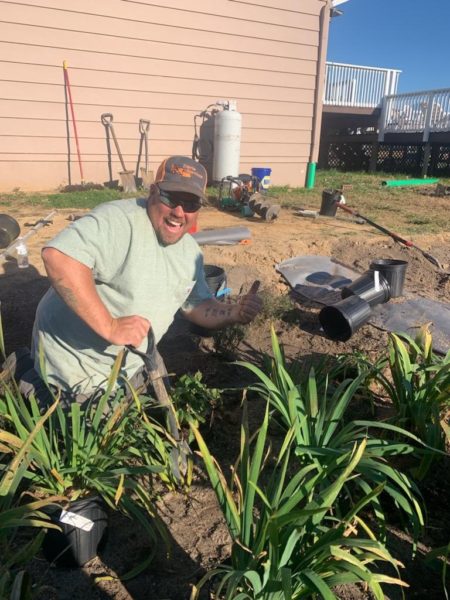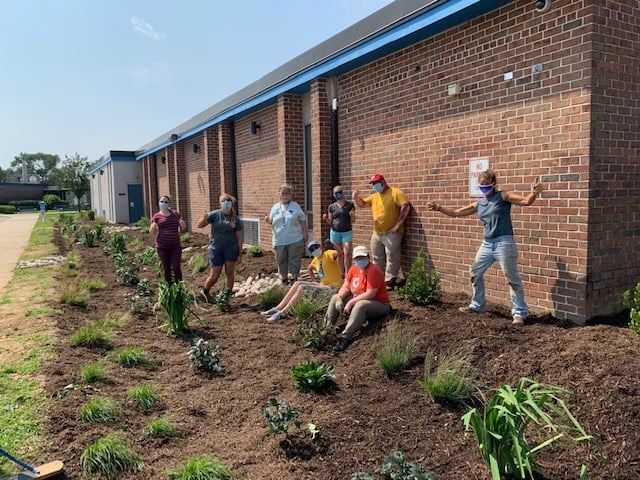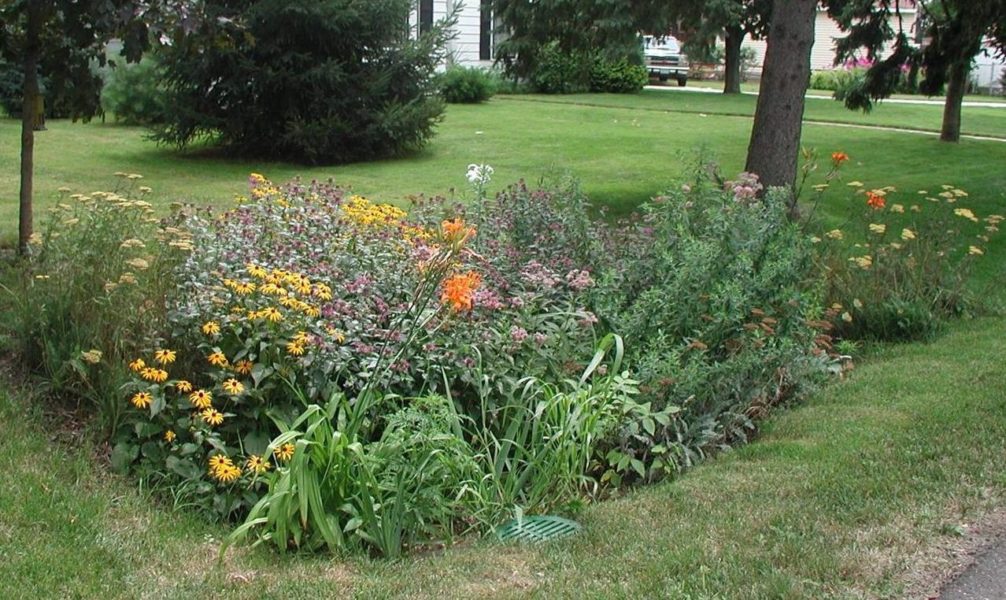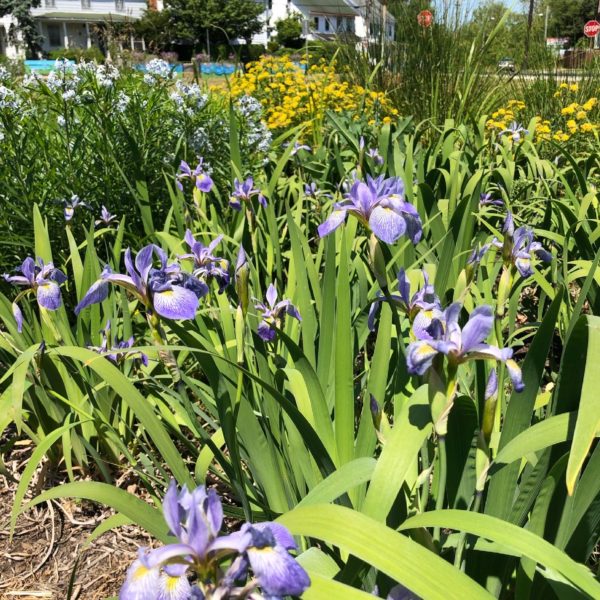By Michelle Peal, NJLCV & Lucia Ruggiero, American Littoral Society
Ernie Davis, third-generation owner of Davis Lawns and Landscapes, is at the forefront of a new green infrastructure movement in landscaping, a facet of the industry that, by his own account, has been on the rise in recent years.

“I see an industry forming, a lot of people want to turn a blind eye,” says Davis, noting that, “green infrastructure is going to be important.” Unlike traditional, gray infrastructure that works by piping excess rainwater into the nearest river or stream, green infrastructure mimics nature by capturing water and slowly releasing it into the soil. It filters out pollutants, creates habitat, and protects communities from flooding during heavy rain events. Davis sees the current climate as an opportunity to do something good while growing the family business.
He’s been constructing and installing green infrastructure projects such as rain gardens and bioswales for the past two and a half years, and says the process has been a learning experience, and is much more involved than “just digging a hole.” These projects generally consist of native plants typically found in wetlands or near bodies of water with deep root structures, facilitating the uptake and infiltration of rainwater back into the soil. Davis has also worked on bioswales, a similar type of green infrastructure, which are more focused on redirecting rainwater, usually to a rain garden or storm drain.
Green infrastructure is important because installations such as rain gardens are extremely effective at taking up large amounts of water and filtering it. They help remove pollutants from runoff before it reenters the water table and mitigate flooding during heavy rainfall.

Since Davis’ first green infrastructure project, a rain garden at Salem High School contracted by the Partnership for the Delaware Estuary Program in 2019, he has garnered a good deal of experience in the field. His work with the South Jersey Landscape Makeover Project includes eleven projects in the year 2021, equating to 100,790 square feet of combined total drainage and an 829,069 gallon per year reduction in stormwater volume.
The South Jersey Landscape Makeover program employs contractors like Davis to construct green infrastructure and landscaping projects at businesses, homes and municipalities within the Kirkwood Cohansey Aquifer in southern New Jersey. Design professionals from Rutgers University act as consultants, and the program also offers financial incentives and free educational webinars for installation of rain gardens and other projects.

These types of projects (green infrastructure ) have had noticeable impacts on Davis’ business, which reported a 30% increase in sales over the past two years. To meet the demand, Davis has hired a new employee and currently plans to hire another. And it’s not just the money that drives him to work on projects like this:
“Green infrastructure has opened doors for my family and business, and I enjoy being part of something new and good for the environment,” Davis adds.
Davis isn’t the only one picking up on the rising demand. Christopher C. Obropta, Ph.D., P.E, Extension Specialist in Water Resources at the Rutgers Cooperative Extension Water Resources Program (RCE Water Resources Program) says, “The demand has increased year after year as these systems are becoming more popular. Demand has also dramatically increased because of new stormwater regulations being implemented.”
The question that remains is whether or not the landscaping industry can keep up with this demand, and whether or not contemporaries of Ernie Davis can help. “While many traditional landscapers and contractors have the skills to do this work, a lot of them don’t have the experience,” added Obropta. He notes that many of the green infrastructure projects undertaken by the RCE Water Resources Program require their staff to be on site to educate and guide contractors on the scope, design and purpose of installations such as rain gardens.
Christine Nolan, of South Jersey Land and Water Trust, has worked with Davis on nearly every project in the past two years and says she wants to see more contractors like him in the field. “Ernie has the right attitude,” she says, and describes how he takes the time to partner with engineers and designers to make sure every project is a success. Nolan’s hope is that there will be a certification body to train more contractors to do the work that Davis has learned to do. “Not just rain gardens, but the entire industry, naturalizing detention basins, rain barrels and bioswales.”
For now, it seems that the green infrastructure industry has the potential to grow, with the help of both experienced contractors like Ernie Davis, and guidance from institutions like South Jersey Landscape Makeover Project and the RCE Water Resources Program. These partnerships bring the necessary skills, experience, and knowledge together for the sake of a greener built environment.
For more information about the South Jersey Landscape Makeover Program, visit the website at: https://www.sjwatersavers.org/makeover/

